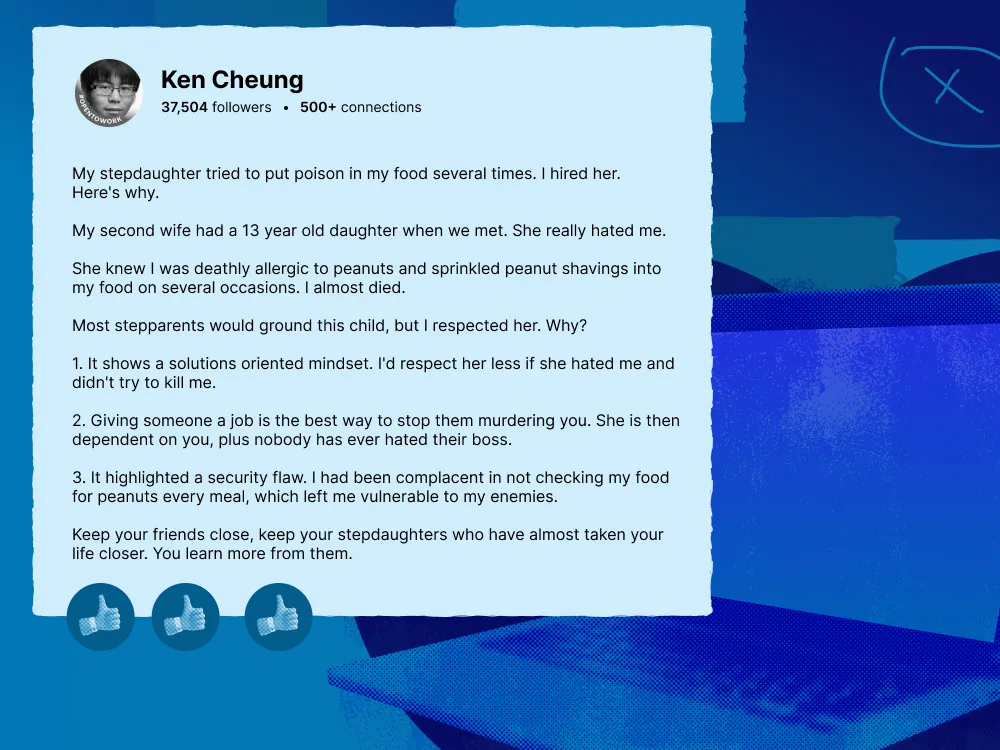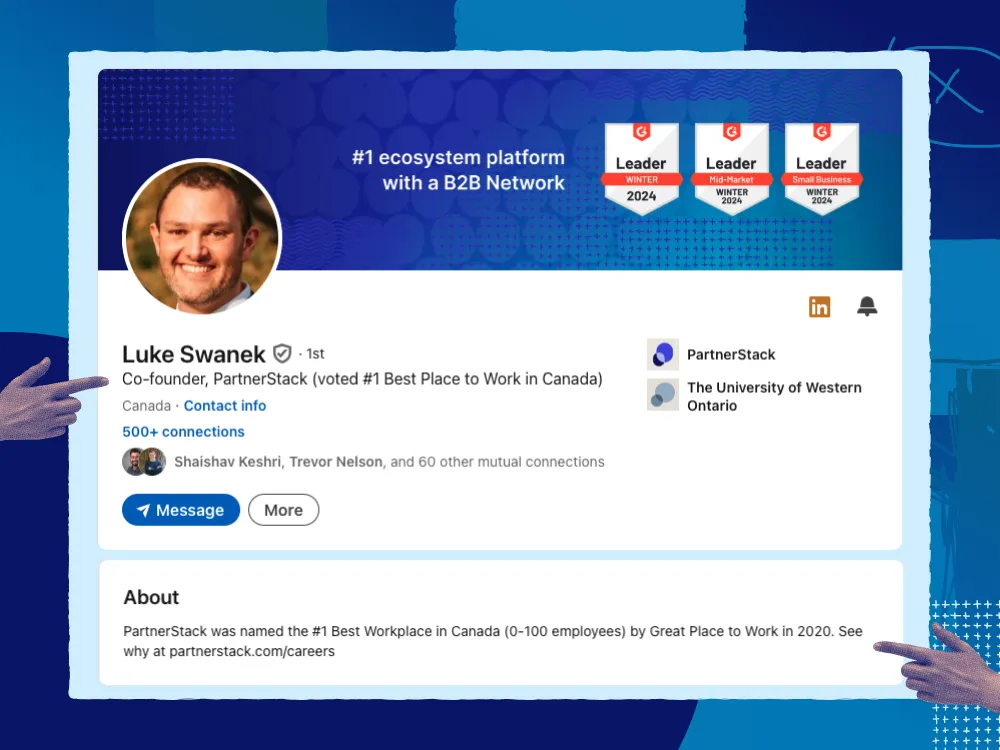Ken Cheng, a London-based comedian, went viral for parodying out-of-touch executives on LinkedIn Lunatics, a Reddit community devoted to “insufferable LinkedIn content.” In one post, he mimics a common post format, sharing, “My stepdaughter tried to put poison in my food several times. I hired her. Here's why.”
Cheng’s satire highlights a growing trend of executives using LinkedIn as a platform to build personal brands and promote their companies. But as LinkedIn has evolved into a helpful tool for B2B engagement, the quality and authenticity of these posts have become widely varied. For every leader who successfully strikes a balance between insight and influence, others miss the mark entirely.
In this article, we will:
- Explore what the most successful executives are getting right on LinkedIn
- Where others are falling flat
- Share tips so you can stay savvy and avoid landing on LinkedIn Lunatics yourself

Related: 10 inspiring partnership leaders to follow on LinkedIn.
What is thought leadership and why is it crucial for C-suite leaders?
Thought leadership is about building credibility by sharing bold insights that position you as an industry expert. C-suite leaders who get it right make their brands indispensable voices in the industry, gain the trust of decision-makers along the way and can make a significant impact on revenue.
The 2024 Edelman-LinkedIn B2B Thought Leadership Impact Report shows that 73 per cent of decision-makers trust an organization’s thought leadership content over its marketing materials, and 9 in 10 are more open to sales outreach from leaders who consistently produce high-quality insights.
What C-suite executives are doing right on LinkedIn
Leveraging LinkedIn means more than just posting, it’s about connecting, sharing expertise and building the kind of credibility that moves the needle. Here’s what C-suite executives are doing right.
Crafting a compelling LinkedIn profile
As the saying goes, “You never get a second chance to make a first impression.” Your LinkedIn profile is often that first impression, an opportunity to establish authority in your niche and build trust with potential clients and partners.
Creating a profile is one thing, positioning it strategically is another. Here’s how to refine your profile so it stands out:
- Get creative with your headline. Instead of just listing your job title, include industry-relevant keywords, unique skills or a quick description of what you do. Make it instantly clear why someone should connect with you.
- Use the first two sentences of your ‘About’ section as a hook. Only the first couple of lines are visible before someone clicks to read more, use them to grab attention and establish credibility.
- Leverage the ‘Featured’ section. Pin successful projects, media features or high-engagement posts here to give viewers a quick snapshot of your achievements and insights.
- Use the visual space to reinforce your headline and make your profile memorable at first glance.
Sharing valuable insights and thought leadership around their expertise
In today’s post-ChatGPT world, the divide between generic content and high-quality thought leadership has never been wider. While it may take more time and resources to create, high-quality content is rewarded by LinkedIn’s algorithm. According to Just Connecting’s 2024 Algorithm Insights report, valuable content typically sees a 30 per cent engagement boost.
High-quality video content, in particular, has become an engagement powerhouse. LinkedIn’s director of product, Abhishek Shrivastava, recently shared with Business Insider that video posts average three times the engagement of text-based content.
For inspiration, look to leaders like Microsoft CEO Satya Nadella, who consistently create posts that provide fresh insights on AI-industry trends.
Actively engaging with the community and balancing professional and personal
The most successful LinkedIn leaders don’t just post, they foster a community. Building an engaged follower base is important for expanding your reach and connecting with new audiences. When someone interacts with your content, whether through a comment or a reaction, your content is shared to their network.
But building a community requires active participation. That means diving into discussions, leaving thoughtful comments and actively sharing content from others. Just look at HubSpot CEO Yamini Rangan as an example, she actively comments on posts and engages with her network daily, leaving responses that make her seem authentic and relatable.
By engaging with others in your niche, you create mutually beneficial relationships that organically grow your audience and build authenticity.

See more: How partner content brings back the human touch to B2B.
What C-suite leaders are doing wrong on LinkedIn
If C-suite leaders were all nailing it on LinkedIn, communities like LinkedIn Lunatics wouldn’t be the phenomenon they are today. Here’s what they’re doing wrong and how to avoid it:
Overly promotional or generic content
Some leaders end up pushing content that reads more like an ad than a post. While it’s tempting to push products, overly promotional content can turn audiences off. Instead, focus on sharing ideas that position you as an industry leader, not just another salesperson.
Ignoring genuine engagement
Ignoring comments or direct messages? That’s a missed opportunity. Engagement on LinkedIn isn’t just a box to check, it’s a chance to build relationships. Responding to comments and questions helps foster a community and adds authenticity to your presence.
Building a LinkedIn presence that resonates
At the end of the day, authenticity wins. C-suite leaders who prioritize genuine, thoughtful content and stay engaged with their network are the ones making an impact. An authentic LinkedIn presence isn’t just a nice-to-have, it’s a key part of modern B2B go-to-market strategy.
.webp)
















